
Overview Development and origin of trade mark applications
In 2020, 89,438 trade mark applications were filed with the DPMA, representing an increase of 13.5% over the previous year (78,831 applications). National applications even grew by 14.9%, from 73,635 applications to 84,619 applications. Only the applications for international registrations of marks, transmitted to us by the World Intellectual Property Organization (WIPO), dropped from 5,196 to 4,819 (-7.3%).
In the middle of the coronavirus pandemic, trade mark applications reached the highest level in 20 years. With 60,425 registrations in the electronic register, the DPMA even reached an all-time high.
The year 2020 was also a good year for the European Union Intellectual Property Office (EUIPO). The number of applications filed with the EUIPO rose by 10.2% to a total of 176,961. The number of applications from Germany amounted to 24,990, an increase of a good 10%.
China again stood out among the foreign direct applicants in Germany with 2,253 applications (previous year: 2,102). China applied for almost three times as many trade marks in Germany as the second-ranking US, with 778 applications (previous year: 625).
In 2020, the service class 35 (advertising; business management, organisation and administration; office functions) was the class most frequently indicated, namely in 29,378 applications, an increase of 11.6% compared to 26,332 applications in the previous year. It is followed by class 41 (providing of training; entertainment; sporting and cultural activities) in the second place, which was indicated in 20,728 applications (+7.9%) and class 9 (electrical apparatus and instruments; computer hardware; software; optical apparatus and instruments), ranking third, which was indicated in 16,338 applications (+15.0%).
With 48.3%, large increases were recorded in class 10 (medical apparatus and instruments; orthopaedic articles) and in class 5 (pharmaceuticals; plasters, materials for dressings; disinfectants; dietary supplements) with 30.6%. This is not entirely unexpected, as these classes include medical face masks and medicines as well as vaccines. Due to the infection prevention and control measures prescribed during the pandemic, it is easy to explain why class 43 (services for providing food and drink; temporary accommodation) stagnated (+0.1%), while almost all other classes showed increases in line with the overall trend.
You can find a detailed overview of the classes of national trademarks applied for in our statistics section.
Class heading according to current version of Nice Classiffication, available here.
1 A trade mark application can be attributed to several classes.
The city states of Hamburg and Berlin came top in terms of trade mark applications per 100,000 inhabitants. Thus — statistically speaking — 222 out of 100,000 citizens in Hamburg and 162 out of 100,000 citizens in Berlin applied for a trade mark in 2020. Since many companies are based in large cities, this result is not entirely unexpected and also corresponds to that of previous years. Of the large territorial states among the German Länder, Bavaria, North Rhine-Westphalia and Hesse were the ones with most applications per 100,000 population. Again, there have been no changes in recent years.
If the cursor is moved over the chart, it shows the trade mark applications in 2020 per German Länder (residence or principal place of business of the applicant).
In 2020, the two top companies in terms of trade mark registrations were Henkel AG & Co. KGaA and Bayerische Motoren Werke AG (BMW), with 92 and 90 registrations, respectively. DFO Global Performance Commerce Ltd., an international company active in the field of e-commerce, ranked third with 59 trade mark registrations.
A detailed overview of the top companies and institutions in terms of trademark registrations can be found in our statistics section.
As mentioned above, more than 60,000 applications (60,425) were registered in 2020. This is not only a substantial increase over the previous year (55,025 registrations), but the highest number of registrations ever recorded by our office in one year.
As the number of withdrawals and refusals remained fairly stable at a good 12,000 withdrawals and a good 6,000 refusals, the number of pending cases rose significantly.
Due to the sharp rise in applications, more than 27,000 procedures were still pending at the end of 2020, compared to just over 21,000 procedures in the previous year.
Certainly also due to the pandemic situation, the proportion of online applications rose further: 77.1% of all applications for national trade marks were received via the two online filing routes, DPMAdirektPro (20.4%) and DPMAdirektWeb (56.7%) (in absolute terms: 65,264). In 2019, the proportion was 72.5% (in absolute terms: 53,365).
| Selected data | 2016 | 2017 | 2018 | 2019 | 2020 |
|---|---|---|---|---|---|
| New applications | 69,391 | 72,047 | 70,534 | 73,635 | 84,619 |
| Registrations | 52,199 | 50,953 | 50,576 | 55,025 | 60,425 |
| Refusals | 7,542 | 6,682 | 7,081 | 6,883 | 6,606 |
Thanks to a clever design of the user navigation in the electronic application process, it has been possible to avoid numerous formal errors in applications. This has made examination of applications easier for the trade mark divisions. However, the simplicity of electronic filing can also tempt people to file overhasty trade mark applications. Although it is possible to file a formally correct application without considering whether or not it can be protected and without conducting a search for earlier rights, it is not very useful if the trade mark cannot be registered later or has to be cancelled after an opposition has been successful.
On our website you will find a lot of information on assessing protectability and on the online tools for searching for earlier rights.
About 40 staff at the trade mark administration at the Jena location deal with all post-registration and secondary procedures after the definitive registration of a trade mark. These include, in particular, renewals, the recording of changes, restrictions on disposal, licensing procedures and cancellations. Furthermore, the trade mark administration staff issue priority documents, certifications of origin or other register extracts.
At the end of 2020, the register contained 845,583 trade marks. The number of 39,491 renewals remained at the high level of the previous year (39,834), while there was a marked increase in the number of trade mark cancellations due to non-renewal of the trade mark (44,799) compared to the previous year (39,964). With 68,944, the number of recorded post-registration changes concerning the proprietor, representative or the address for service was slightly above last year’s figure (68,944). Licences were entered in the register for 32 trade marks. The cases in which the proprietors made a declaration about their willingness to license the trade marks gained considerable importance (at the end of 2020, 12,258 trade marks compared to 4,956 at the end of 2019). For 6,195 trade marks, a willingness to sell/transfer was declared until the end of 2020 (2,428 in the previous year).
For further statistical data on trade mark administration, please see the “Statistics” chapter.
According to the Trade Mark Act (Markengesetz), anybody may request cancellation of a registered trade mark. A reason for cancellation must be stated in the request, which is subject to a fee. A reason for cancellation may be the non-use of a trade mark, called “revocation” in the Trade Mark Act. For applications for revocation filed on 1 May 2020 or later, revocation proceedings can now also be fully conducted before the DPMA if the trade mark proprietor objects to the application for revocation and cancellation of his trade mark and if the person filing such an application pays a fee of 300 euros for pursuing the application further. Previously, the person filing the application had to further pursue his application before the ordinary courts.
In 2020, 440 applications for revocation or invalidation were received (previous year: 325). Requests to further pursue revocation proceedings before the DPMA were filed in 111 cases.
Since 1 May 2020, it has been possible to file an application for a declaration of invalidity and cancellation of a registered trade mark with the DPMA – or an application for invalidation of the part of an international registration of a mark extended to Germany – due to the existence of conflicting earlier rights within the meaning of sections 9 to 13 of the Trade Mark Act. Previously, such proceedings were only possible before the ordinary courts. In 2020, 89 such applications were received.
Another reason for cancellation is the existence of absolute grounds for refusal at the time of filing the application. In 2020, 240 requests (previous year: 214) were based on this reason. Absolute grounds for refusal may exist if the challenged trade mark lacked distinctiveness at the time of filing the application or if it was descriptive. Another absolute ground for refusal is filing a trade mark application in bad faith; this reason was given for 107 applications for cancellation (previous year: 85) and thus for roughly 45% of all applications for cancellation based on absolute grounds for refusal. A trade mark application is filed in bad faith if the trade mark proprietor filed the application with the intention to impede others in an anti-competitive manner.
Due to the new responsibilities of the DPMA in revocation and invalidity proceedings, the number of applications requiring a substantive decision thus increased from 214 in 2019 to 440 in 2020. According to the conception of these proceedings, prescribed by law, the decision must always be taken by a trade mark division composed of three lawyers. This poses a considerable challenge, which we will meet by increasing our staff.
Briefly explained When everyone just says “wedges”
Whether for potato wedges or other everyday products: Names of trade marks that are being used in common everyday language may become generic — and thus lose their protection.
Kornspitz, Tempo, Walkman, Flip-Flop – registered trade mark or already generic? All these examples are protected names of trade marks.
However, over time, registered trade marks may become generic names or common names. This is the case if the trade mark is understood in the relevant trade sector only as a common name generally used to designate all goods or services of a particular kind, irrespective of their commercial origin, and does no longer fulfil the actual primary function of a trade mark that is indicating the origin of a product or service from a particular company.
Those who do not defend their trade mark risk “cancellation due to revocation”
It is obvious that trade marks may no longer enjoy legal protection if they can no longer fulfil their purpose of distinguishing products as coming from a particular origin. For this reason, section 49 (2) no. 1 of the Trade Mark Act (Markengesetz) provides for a possible cancellation of such trade marks upon request. This is called “cancellation due to revocation” in legislation.
Since it is of course very unpleasant for the trade mark proprietors and often even damaging to business if their trade mark is taken away again, there are strict requirements for such a “cancellation due to revocation”. For example, a legal requirement is that the trade mark has developed into a common name in trade because of the conduct or inactivity of its proprietor. If the proprietors themselves use the trade mark as a generic name, they naturally merit less protection than if they are uninvolved. Trade mark proprietors who passively watch the development of their trade mark into a generic name cannot necessarily expect to retain protection for their trade mark. Rather, the trade mark proprietors have the obligation to actively take countermeasures to prevent losing the trade mark. For example, they should systematically use the R in a circle symbol “®” and warn those people to cease and desist who use the trade mark as a generic name.
Trade mark or generic name? Perception of the public is crucial
Another requirement for “cancellation due to revocation” is that the trade mark must have become a common name only after its registration. If the trade mark had already been generic before its registration, it may possibly be cancelled due to invalidity due to the existence of a ground for refusal at the time of registration under section 50 of the Trade Mark Act. For the assessment, the perception of the relevant public at the time of the decision on the application for revocation is crucial. The relevant public are the consumers and end users of the goods and services for which the trade mark is registered and usually also the manufacturers, traders, intermediaries or suppliers and providers of these goods and services. The assumption that the mark has become a common name can only be accepted if almost the entire relevant public perceives the trade mark as a generic name. According to the case law, “almost the entire” means that the trade mark is perceived as an indication of origin only by a totally insignificant part of the relevant public.

Therefore, cancellations due to conversion into a generic name are rather rare but do occur. For example, the Landgericht (LG) München (Munich Regional Court) has found that the trade mark “Wedges”, registered for goods including also “frozen or prepared potatoes”, has become a generic name for those goods, namely a synonym for the word “Kartoffelspalten” (potato wedges/steak fries) (LG München I, judgment of 9 May 2001, HKO 12/01, InstGE 2, 32, 37).

Inside Trade mark boom during the coronavirus crisis
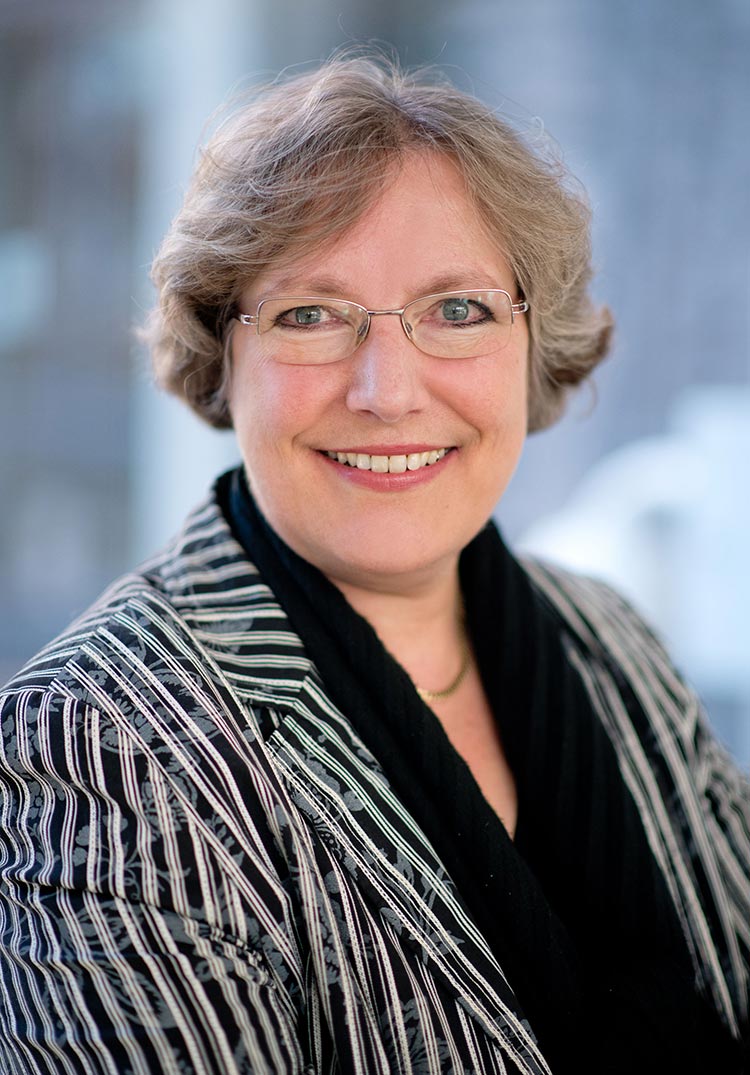
Barbara Preißner, Head of Directorate General “Trade Marks and Designs”, explains why the number of trade mark applications has increased significantly.
When the coronavirus pandemic was spreading with all its economic consequences last year, experts quickly expected it to have an impact on the trade mark area too. According to an analysis by the Director General of the World Intellectual Property Organization in April, a recession is usually expected to entail declining trade mark applications. This was in line with the experience we had gained from the financial crisis. Trade marks are IP rights that have always been very closely linked to economic development. One year later, we can draw a preliminary conclusion. According to the Federal Statistical Office, the economy shrank by more than five per cent in 2020. The development of the number of trade mark applications, however, was different from what could have been expected: Last year saw considerably more rather than fewer trade mark applications. With an increase of 13.5%, there was even a veritable boom. Obviously, there were effects that mitigated the recession in this area and that I will address below.
Effective thanks to e-file and home office
At the beginning of the pandemic, our first thought was: How can we ensure our areas remain operational? Fortunately, the new situation did not catch us completely unprepared: At the DPMA and especially in the trade mark area, working from home has been common practice for years. The electronic case file for trade mark procedures, introduced six years ago, helps us work efficiently when everybody is working from different locations. A number of mobile workstations, i.e. notebooks, have been added to the available teleworking positions within a relatively short period of time. Very important to us was to be quick and consistent in ensuring the trade mark area’s ability to operate. The personnel situation in the trade mark area is already tense. And in this situation, as already mentioned, an increase in applications became apparent after some time.
Trade mark protection in e-commerce increasingly important
But what is the cause of this boom? In our view, there are several reasons: For example, the pandemic has turned out to be a driver of digitisation and computer technology that has led to a big increase in e-commerce. As a consequence, ever more vendors have apparently been forced to seek trade mark protection for their products and services – not least also because of the requirements of trading platforms such as Amazon and Ebay. Also very strong was the need for IP rights in the product and service classes “Pharmaceuticals”, “Medical apparatus and instruments” and “Clothing and footwear”. Finally, the increase in trade mark applications for Germany from China, which we have been registering for years, has probably contributed considerably to the total result too. Personally, I think that the possibility to apply for registration of a trade mark via the internet has also contributed to the boom. Such an online application is very easy to file while working from home even during the pandemic. In line with the long-standing trend and particularly significant was the further increase in online filings.
In any case, we are proud that, on the whole, we have handled the situation very well. The number of concluded procedures increased less than the number of applications. Of course, this also means that we have a backlog because of the increased number of applications. Currently, we therefore cannot guarantee that a trade mark will be registered very shortly after the application has been filed. It remains to be seen whether these trends will continue in the current year. What is certain, however, is that we will continue doing our best to offer our customers the best possible services.
In Focus Traditional trade marks from the East — so much more than a 40-year history of the GDR
The GDR has been history for 30 years, but it lives on: There are almost 4,000 “Ostmarken” (trade marks from Eastern Germany), which were recorded in the trade mark register even before the fall of the Berlin Wall. Some of these trade marks have a long tradition. The “crossed swords” of Meissen porcelain are said to be the oldest German brand. We present some stories of these brands here and you can find even more on our website.
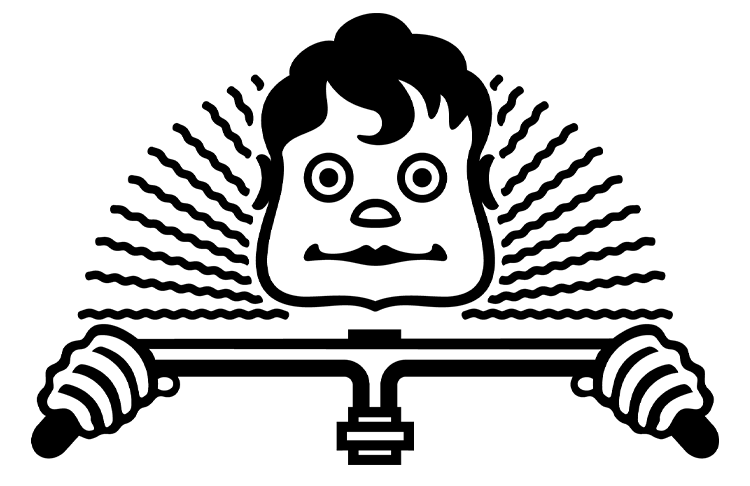
On 1 January 1885, the brothers Friedrich and Wilhelm Nevoigt founded their first joint enterprise – they started to produce bikes specifically developed under the trade mark “Diamant”. In 1898, the Nevoigts introduced the twin roller chain they had developed themselves; bicycle chains still work that way today. In 1911, the well-known mark “Kopf über Fahrradlenker” (“head over bicycle handlebars”) was entered in the trade mark register.
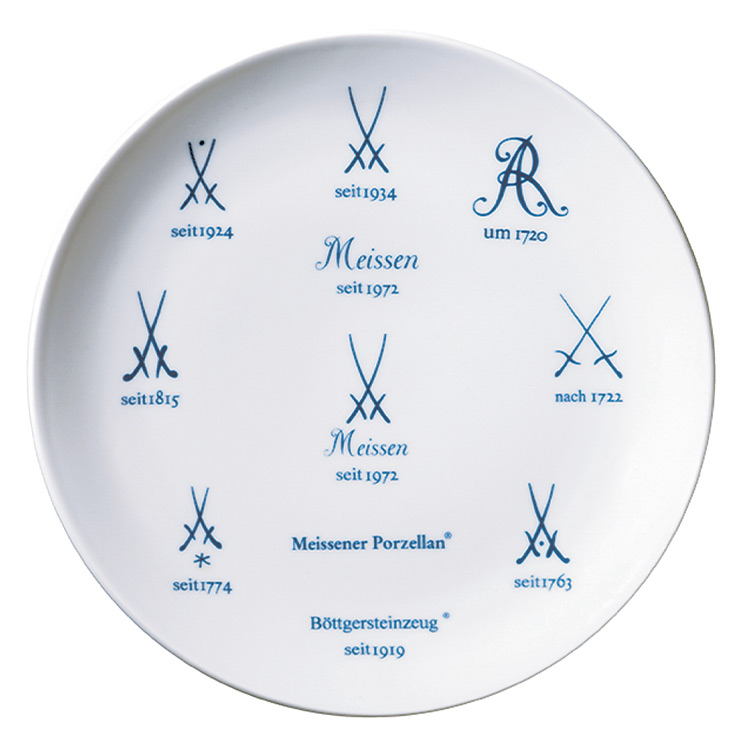
August the Strong (1670–1733), the “King of Saxony”, relied on the art of alchemists and summoned the young Johann Friedrich Böttger to Dresden. At first Böttger tried in vain to make gold from base metals. In 1707, together with the councillor of the Elector of Saxony and scientist Ehrenfried Walther von Tschirnhaus he finally succeeded in producing a red porcelain stoneware – “Böttgersteinzeug” (Böttger ware) – still registered today as a word mark DD231494.
A laboratory protocol of 15 January 1708 documents the birth of Meissen porcelain: White “Colditzer clay” and alabaster were added to the original mixture, the “white gold” was created. In 1710, August the Strong founded the first European porcelain manufactory, which was initially based at Albrechtsburg castle in Meissen.
The recipe for Meissen porcelain was initially kept secret. Although the staff was supervised in a prison-like manner, the arcanist Samuel Stöltzel succeeded in deciphering the recipe and fleeing with it to Vienna. In 1718, the second porcelain manufactory in Europe was established there.
In order to identify the authentic Meissen Porcelain beyond doubt, the manufactory immediately marked all manufactured goods with two crossed swords.
Apart from the crossed pair of swords, sequences of letters were also common until 1730, for example
K.P.M. = Königliche Porzellan Manufaktur (Royal Porcelain Manufactory)
M.P.M. = Meissener Porzellan-Manufaktur (Meissen Porcelain Manufactory)
K.P.F. = Königliche Porzellan-Fabrik (Royal Porcelain Factory)
From 1731 onwards, the “crossed swords” had become generally established. After the Imperial Act on the Protection of Trade Marks (Reichsgesetz zum Markenschutz) came into force, the Meissen Porcelain Manufactory had its trade marks registered on 20 May 1875. From 1948 onwards, a year sign was stamped into the base of each piece of Meissen porcelain as an additional marking. Thus the year of production of each piece of porcelain can be proved beyond doubt.
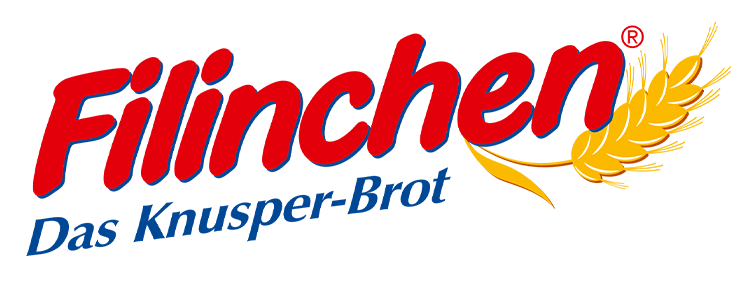
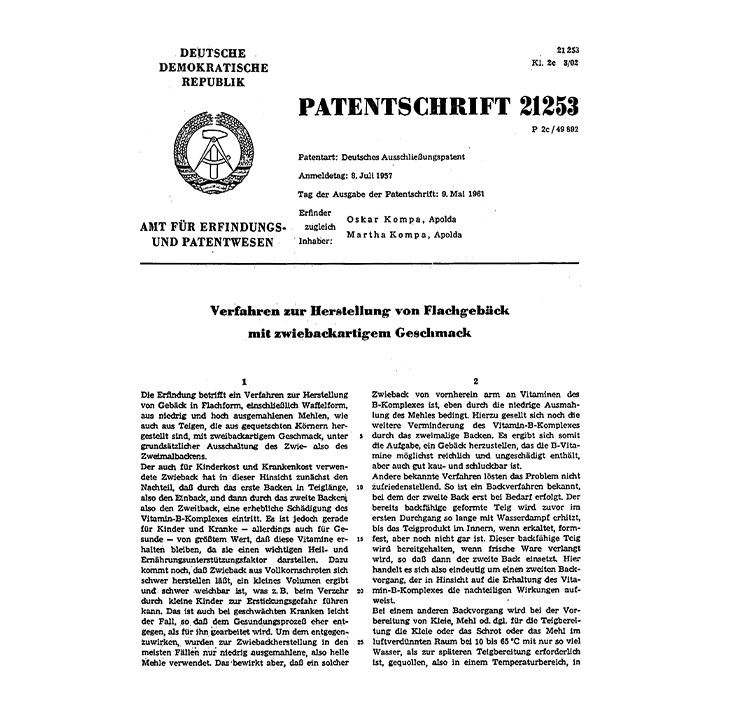
“Filinchen” is a thin waffle bread from Thuringia, which was very well known and popular in the GDR. Even today it is still being produced in Apolda and is available all over Germany.
“Filinchen” dates back to the master baker Oskar Kompa, who had opened a small business in Apolda in 1946. In 1956, the crunchy bread was produced for the first time. Oskar Kompa wanted to bake something very special for his childhood friend Felicitas (nickname “Filinchen”) and so the name “Filinchen” was born. On 19 June 1958, he applied for the word mark DD624275 “Filinchen” with the Office for Inventions and Patents of the GDR and the trade mark was registered on 2 September 1958. Oskar Kompa also invented a special baking tin for his crunchy bread, which is characterised by irregular dot-like elevations and depressions, thus diverging from a waffle-like impression.
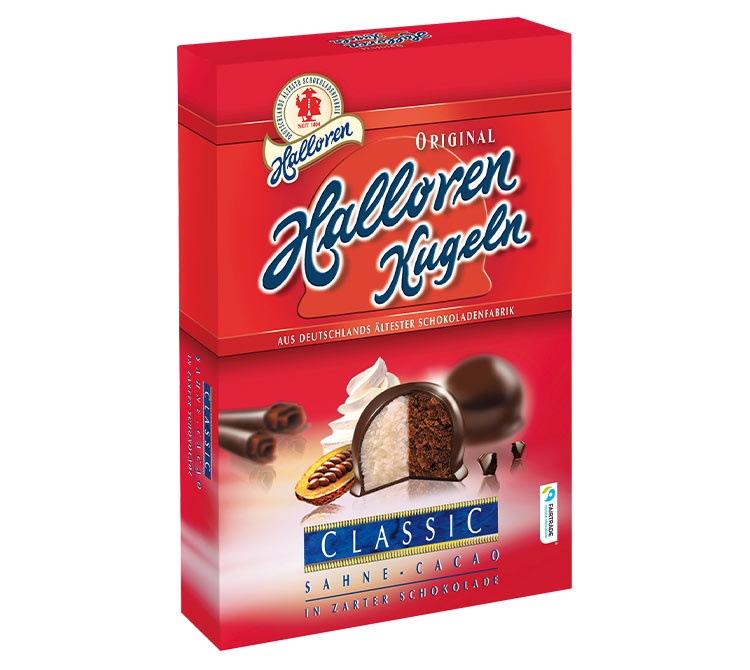
Die Geschichte der Schokoladenfabrik „Halloren“ geht bis auf das Jahr 1804 zurück: In Halle an der Saale gründete der Pfefferküchler Friedrich August Miethe eine kleine Konditorei und Honigkuchenbäckerei. Diese übernahm ab 1851 ein gewisser Friedrich David. Unter dem Namen „David und Söhne“ erlangte die Firma um die Jahrhundertwende ihren Ruf als Hersteller hochwertiger Pralinés.
Während des Zweiten Weltkriegs wurden in den Werkhallen Flugzeuge anstatt Schokolade gefertigt. Die Firma nahm jedoch kurz nach Kriegsende die Schokoladenproduktion wieder auf. 1950 folgten die Enteignung und der Zusammenschluss mit den Firmen Most und Diamalt zum „Kombinat Süßwaren“. Ein innerbetrieblicher Namenswettbewerb gab dem neuen Werk ab 1952 den Namen „VEB Schokoladenfabrik Halloren“. Der Name geht auf die Mitglieder der bis heute existierenden Bruderschaft der Salzwirker, die „Halloren“, zurück. Weltberühmt und beliebt sind die „Halloren-Kugeln“, die den Knöpfen der Salzwirker-Uniform nachempfunden sind.
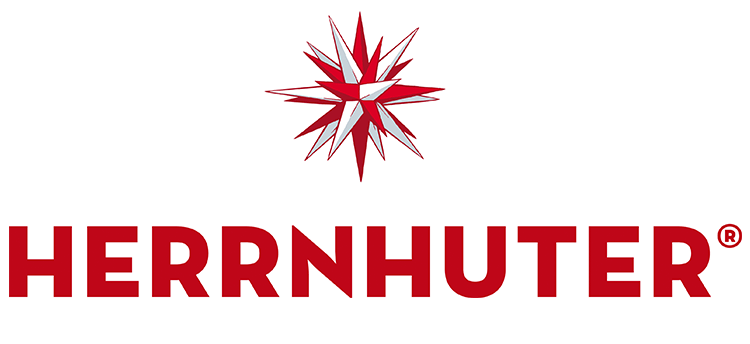
The Moravian star (Herrnhuter Stern) was invented at the castle of the Unity of Brethren of Herrnhut in Upper Lusatia more than 160 years ago, and is considered the origin of all Christmas stars.
At the beginning of the 19th century, the first star made of paper and cardboard in the colours red and white was shining in the rooms of the Moravian boarding school. Built by a tutor in mathematics class, it was intended to help pupils obtain a better understanding of geometry.
The foundation of the star manufactory is closely linked with the name of the book and music publisher Pieter Henrik Verbeek, who sold the first stars in his bookstore. At the end of the 19th century, he invented the first stable star that could be assembled from parts. The new thing about it: It was possible to assemble the star by sliding the metal frames of the paper points into rails fitted to an openwork metal body base. Thus it was possible for the first time to fold the star and ship it. Today, 140 staff produce around 700,000 stars a year in Herrnhut, which are sold all over the world.
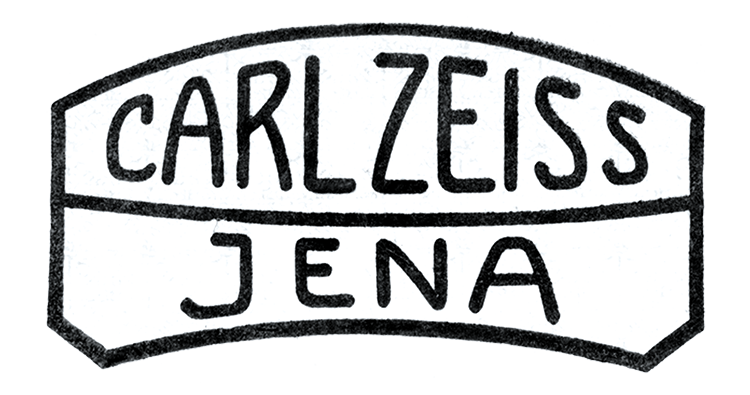
On 17 November 1846, Carl Zeiss founded an optical workshop in Jena. Only one year later, he started to build simple microscopes. It soon became clear to the young mechanic that he would only be successful in further developing his devices in cooperation with science. In 1863, he therefore persuaded the physicist Ernst Abbe, professor at the university of Jena, to join the company. The company quickly became a globally operating manufacturer of optical devices, such as binoculars, planetarium projectors or surgical microscopes.
The first trade mark application was filed with the Imperial Patent Office (Reichspatentamt) on 11 May 1904 and registered on 24 June 1904. Since 1906, the trade mark has been on almost all devices and printed matter. At the beginning, they were experimenting with the size and form of individual letters. A standard form would very soon become accepted. The lens frame became the logo for optical and precision mechanical excellence – until today.